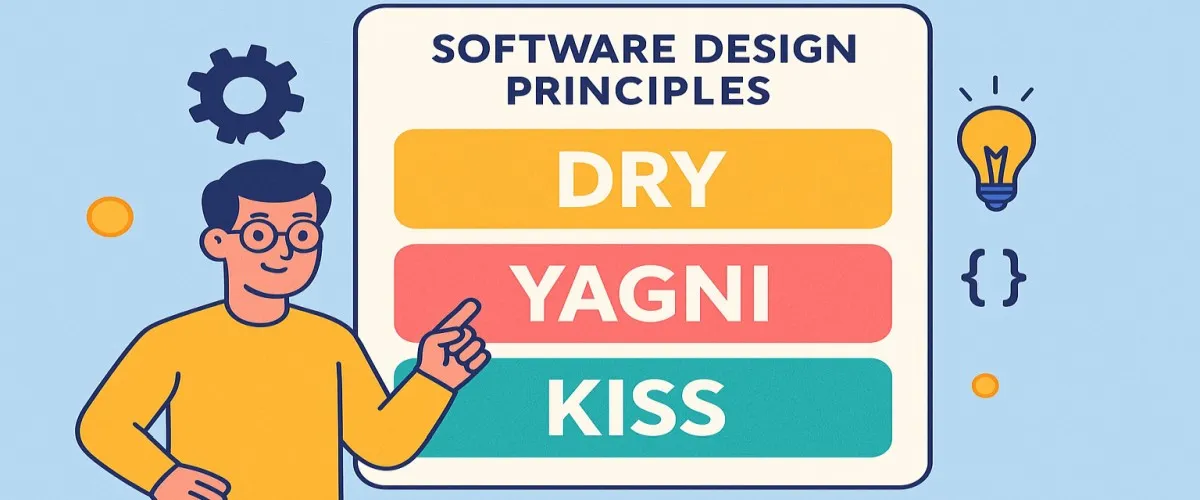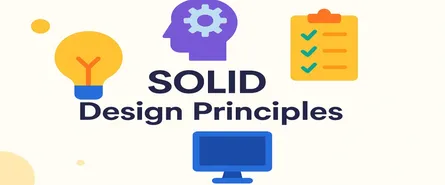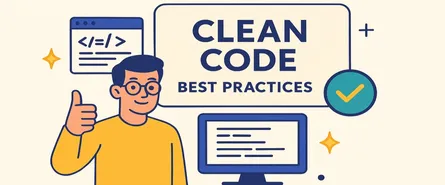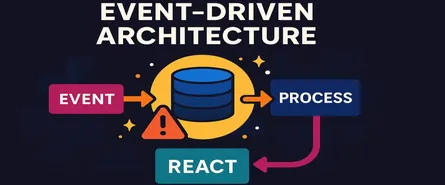
Software Design Principles (Basics) : DRY, YAGNI, KISS, etc
1. Introduction: The Bedrock of Architectural Excellence
1.1 Why Foundational Principles Remain Critical in the Modern .NET Ecosystem (.NET 8/9+)
The pace of software development never slows down. As .NET has evolved through .NET Core and now into .NET 8 and beyond, developers have gained access to more powerful libraries, cross-platform tooling, and language features. Despite these advances, the fundamental challenges of software design remain unchanged. Complexity grows naturally. Shortcuts taken under pressure lead to technical debt. Project requirements evolve, and yesterday’s quick win becomes tomorrow’s headache.
In this context, foundational software design principles are not outdated relics. They are the quiet, persistent disciplines that help teams maintain clarity, productivity, and long-term agility. Think of them as the structural integrity within the skyscraper of your application. No matter how sophisticated your tech stack, the stability of your codebase depends on applying these time-tested concepts. .NET 8/9 amplifies your potential, but without strong design principles, even the best frameworks cannot save you from chaos.
1.2 The Architect’s Role: Moving Beyond Frameworks to Foster a Design-First Culture
Architects often find themselves at the intersection of technology, business goals, and team dynamics. It’s tempting to anchor architectural decisions on the latest framework, cloud offering, or pattern—especially in an environment that prizes speed and “best practice” templates.
But world-class architecture is less about picking the right tool and more about fostering a design-first culture. This means focusing on the shape, intent, and resilience of your solution. As an architect, your influence is not just in diagrams or documentation, but in the questions you ask and the standards you champion. Why this abstraction? Is this feature genuinely needed, or is it just anticipated? Are we keeping things as simple as they can be?
Great architects teach teams to ask, “Should we?” as often as, “Can we?” In this way, foundational principles like DRY, KISS, and YAGNI become more than slogans. They are the North Star that keeps your architecture navigable as your technology stack evolves.
1.3 Core Themes of the Article: Simplicity, Pragmatism, and Long-Term Maintainability
This article is not about memorizing acronyms. It’s about nurturing a mindset—one that balances speed with stability, flexibility with focus, and innovation with the wisdom of restraint.
Here’s what you’ll take away:
- Simplicity: Why less code and fewer moving parts almost always win.
- Pragmatism: How to weigh real business value over hypothetical flexibility.
- Long-term maintainability: Techniques to reduce duplication, clarify intent, and minimize friction as your .NET application grows.
Along the way, you’ll see practical, modern C# examples and architectural patterns to bring these principles to life. Ready to revisit the fundamentals with fresh eyes? Let’s dive in.
2. The Pursuit of Simplicity
2.1 KISS (Keep It Simple, Stupid): Combating Accidental Complexity
If there’s a single, universal pain point for every software project, it’s complexity. And while some complexity is inherent to the problem domain, much of it is “accidental” — a side effect of unclear requirements, rushed designs, or a desire to show off technical prowess.
The KISS principle, famously blunt, reminds us that simplicity is a feature. When faced with multiple ways to solve a problem, the simplest, most direct solution is often the best. This doesn’t mean you should avoid necessary abstractions, but you should be vigilant about introducing them only when they add real value.
2.1.1 The Dangers of Over-Engineering in Enterprise .NET Applications
It’s easy to spot over-engineering in the wild: sprawling configuration files, abstract base classes that are never inherited, generic types that boggle the mind, and microservices that could have been modules. In .NET enterprise environments, this often looks like:
- Wrapping every dependency in a custom interface “just in case”
- Building plug-in systems for applications with no foreseeable need for extensibility
- Implementing elaborate CQRS (Command-Query Responsibility Segregation) or event sourcing patterns on CRUD-only apps
Every layer of abstraction has a cost. Each interface, pattern, or extension point increases your surface area for bugs and slows down onboarding for new developers. The result? Teams spend more time maintaining the scaffolding than delivering business value.
When is Complexity Justified?
Some domains demand complex architectures (think banking or real-time trading). But for most line-of-business applications, the simplest thing that could possibly work is usually enough. As an architect, ask yourself: Would a junior developer grok this design after a quick code review? If not, can you simplify?
2.1.2 Practical Example: Refactoring a Complex Conditional Hell into a Simple, Strategy-Based Design in C#
Let’s look at a classic example. Suppose you inherit code like this:
// .NET 8+ compatible code
public decimal CalculateDiscount(Customer customer, Order order)
{
if (customer.IsLoyal && order.Total > 1000)
{
return order.Total * 0.1m;
}
else if (customer.IsNew && order.Total > 500)
{
return order.Total * 0.05m;
}
else if (customer.IsEmployee)
{
return order.Total * 0.2m;
}
// ...more conditions...
else
{
return 0m;
}
}This is manageable now, but what happens as the business grows? Rules change, conditions pile up, and soon nobody wants to touch this method.
Applying KISS with the Strategy Pattern
Instead, encapsulate each discount rule in its own class and use a collection of strategies:
public interface IDiscountStrategy
{
bool CanApply(Customer customer, Order order);
decimal Calculate(Customer customer, Order order);
}
public class LoyalCustomerDiscount : IDiscountStrategy
{
public bool CanApply(Customer customer, Order order) => customer.IsLoyal && order.Total > 1000;
public decimal Calculate(Customer customer, Order order) => order.Total * 0.1m;
}
public class NewCustomerDiscount : IDiscountStrategy
{
public bool CanApply(Customer customer, Order order) => customer.IsNew && order.Total > 500;
public decimal Calculate(Customer customer, Order order) => order.Total * 0.05m;
}
public class EmployeeDiscount : IDiscountStrategy
{
public bool CanApply(Customer customer, Order order) => customer.IsEmployee;
public decimal Calculate(Customer customer, Order order) => order.Total * 0.2m;
}
public class DiscountService
{
private readonly List<IDiscountStrategy> _strategies;
public DiscountService(IEnumerable<IDiscountStrategy> strategies)
{
_strategies = strategies.ToList();
}
public decimal CalculateDiscount(Customer customer, Order order)
{
foreach (var strategy in _strategies)
{
if (strategy.CanApply(customer, order))
return strategy.Calculate(customer, order);
}
return 0m;
}
}This approach keeps each rule simple, testable, and easy to extend—without modifying a massive conditional block. It also demonstrates how KISS and good OO design often go hand-in-hand.
2.2 YAGNI (You Aren’t Gonna Need It): The Cost of Speculative Design
Developers love to plan for the future. Sometimes, we anticipate requirements, building extensible code that solves tomorrow’s problems. But more often than not, “future-proof” code just adds complexity with no guarantee it will ever be needed.
YAGNI is the principle that cautions: Don’t implement a feature until it is necessary.
2.2.1 Resisting Gold Plating and Unnecessary Abstractions
Gold plating refers to delivering more than is required—adding features, hooks, or flexibility that the user didn’t ask for. While it might feel prudent, speculative design can lead to:
- Unused abstractions that confuse new developers
- Higher test coverage requirements
- Slower delivery times due to analysis paralysis
The discipline here is to “build what is needed, and only what is needed.” Every line of speculative code is a liability until it is justified by a real requirement.
How Do You Spot YAGNI Violations?
Ask: “Is there a real, validated user need for this code right now?” If the answer is no, defer it. Use TODOs, comments, or future backlog items if you must, but don’t code for hypothetical scenarios.
2.2.2 Architectural Decision Records (ADRs) as a Tool to Justify Complexity
Sometimes, you do need to introduce complexity for scalability, compliance, or integration. But these decisions should be made deliberately and documented transparently. That’s where Architectural Decision Records (ADRs) come in.
ADRs are short, focused documents that capture:
- The context or problem
- The options considered
- The decision made (and why)
- The consequences
By writing ADRs, teams can justify when they deviate from YAGNI and revisit the reasoning later. This habit is especially valuable in larger organizations or when onboarding new architects.
Sample ADR (in Markdown):
# ADR-002: Add Plugin Architecture to Order Processing
## Context
Product management expects that new order types may be added by external partners in the future.
## Decision
We will not add a plugin system at this time. The codebase is stable, and new requirements have not materialized.
## Consequences
Should the need arise, we can refactor using the strategy pattern or MEF in .NET. For now, we avoid unnecessary complexity.Documenting these decisions helps teams avoid unnecessary abstractions—keeping solutions focused, nimble, and on track.
3. The Mandate for Focused, Unambiguous Code
3.1 DRY (Don’t Repeat Yourself): Creating a Single Source of Truth
Duplication is the silent killer of maintainability. The DRY principle encourages us to keep each piece of knowledge in our system in one place, reducing inconsistencies and easing future changes.
3.1.1 Identifying and Eliminating Duplication in Code, Configuration, and Infrastructure-as-Code (IaC)
Duplication isn’t just about copy-pasted code. It occurs in many forms:
- Repeated logic in multiple methods or services
- Configuration values scattered across files or hard-coded in different layers
- Infrastructure scripts (like ARM templates or Bicep files) that define the same resources with minor changes
Every time you fix a bug or update a feature, you must remember to make the change everywhere it appears. That’s a recipe for drift and regressions.
Example: Shared Validation Logic
Suppose you have similar email validation logic in multiple places:
public bool IsValidEmail(string email)
{
return Regex.IsMatch(email, @"^[^@\s]+@[^@\s]+\.[^@\s]+$");
}Instead, centralize it:
public static class EmailValidator
{
public static bool IsValid(string email)
=> Regex.IsMatch(email, @"^[^@\s]+@[^@\s]+\.[^@\s]+$");
}Now, use EmailValidator.IsValid(email) everywhere.
Example: DRY in Infrastructure
With Bicep or Terraform, use modules or parameterized templates to avoid repeating the same resource definitions.
3.1.2 C# Patterns for DRY: Generic Classes, Extension Methods, and Shared Libraries
.NET gives you many tools to enforce DRY:
Generic Classes
Avoid writing similar classes for different types. Use generics.
public class Repository<T> where T : class
{
// CRUD methods for any entity
}Extension Methods
Add behavior to existing types without modifying them.
public static class StringExtensions
{
public static bool IsNullOrEmpty(this string value) => string.IsNullOrEmpty(value);
}Shared Libraries
Package cross-cutting logic (logging, validation, utilities) into libraries consumed by all your applications and services. This centralizes updates and reduces drift.
Source Generators (.NET 5+ Feature)
Leverage source generators to automate code that must exist in multiple places, but where manual duplication would be error-prone.
3.2 Curly’s Law (Do One Thing): The Precursor to the Single Responsibility Principle
Curly’s Law, borrowed from the movie “City Slickers,” is sometimes summed up as: “Do one thing, and do it well.” In software, this means every function, class, or microservice should focus on a single purpose.
3.2.1 Applying the “One Thing” Rule at Every Level: Methods, Classes, and Microservices
- Method Level: Each method should answer a single question or perform a single action. If you find yourself using “and” or “or” in the method’s name, consider splitting it.
- Class Level: A class should encapsulate one responsibility or concept. If you feel the urge to prefix or suffix class names (like
OrderProcessorAndLogger), revisit your design. - Microservices Level: Each microservice should represent a distinct bounded context. Services that do too much become tightly coupled and hard to change.
Example: Refactoring a Method That Does Too Much
Before:
public void ProcessOrder(Order order)
{
Validate(order);
CalculateTotals(order);
Save(order);
SendConfirmationEmail(order.CustomerEmail);
}After splitting responsibilities:
public class OrderService
{
private readonly IOrderValidator _validator;
private readonly IOrderCalculator _calculator;
private readonly IOrderRepository _repository;
private readonly INotificationService _notifier;
public OrderService(IOrderValidator validator, IOrderCalculator calculator,
IOrderRepository repository, INotificationService notifier)
{
_validator = validator;
_calculator = calculator;
_repository = repository;
_notifier = notifier;
}
public void Process(Order order)
{
_validator.Validate(order);
_calculator.Calculate(order);
_repository.Save(order);
_notifier.Notify(order.CustomerEmail);
}
}Each concern is now isolated. Testing, maintaining, and evolving each part becomes far easier.
3.2.2 How This Principle Directly Enhances Testability and Reduces Coupling
When your code does “one thing” at each level, your units become truly testable. You can write focused tests, mock dependencies, and reason about failures more easily.
Reduced Coupling
Single-purpose components depend on fewer other parts. This makes them easier to change, reuse, and deploy independently.
Improved Collaboration
Teams can work on different services or modules without constantly stepping on each other’s toes.
4. Designing for the Future: Maintainability and Evolution
4.1 Code for the Maintainer: Your Most Important Audience is the Next Developer
4.1.1 The Business Value of Readability and Intention-Revealing Code
Much of software’s total cost is spent not on initial development, but on ongoing maintenance—fixing bugs, adapting to new requirements, and onboarding new team members. In this landscape, readability becomes a business concern. Code is not only for compilers or runtime engines; it’s for the next human who needs to understand, extend, or debug your logic.
Readable, intention-revealing code minimizes friction. Developers can make safe changes faster. Incidents resolve quickly. Features ship with fewer regressions. In regulated or high-stakes environments, code clarity even reduces legal or compliance risk, since auditors and stakeholders can reason about what the system does.
Ask yourself: If you revisit your code six months from now, will you understand it quickly? Will a new hire feel confident working in this module, or will they fear breaking something?
4.1.2 Leveraging C#‘s Features (e.g., Records, Expression-Bodied Members) for Clarity
Modern C# offers several tools to make code more intention-revealing without sacrificing performance or safety.
C# Records Records provide immutable, value-based types, which are perfect for modeling data transfer objects (DTOs) and entities where identity is based on value rather than reference. They make your intent explicit: “This object is just data.”
public record Customer(string Name, string Email, bool IsLoyal);Expression-Bodied Members These reduce ceremony, expressing simple logic cleanly:
public decimal Total => Items.Sum(item => item.Price * item.Quantity);Pattern Matching and Switch Expressions Pattern matching clarifies intent, especially when dealing with discriminated unions or hierarchical data:
string DescribeOrderStatus(OrderStatus status) => status switch
{
OrderStatus.Pending => "Awaiting fulfillment",
OrderStatus.Shipped => "On its way",
OrderStatus.Delivered => "Delivered to customer",
_ => "Unknown"
};Intention-Revealing Names Favor descriptive names over cleverness:
public bool HasOutstandingBalance() // Good
public bool Hob() // Bad (acronyms are unclear)Small investments in clarity multiply over the life of a project.
4.2 The Boy Scout Rule: Leave the Codebase Better Than You Found It
4.2.1 Integrating Continuous, Incremental Refactoring into Your Team’s Workflow
The Boy Scout Rule encourages developers to always leave the code a little cleaner than when they found it. This doesn’t mean rewriting whole modules in a single pull request. Instead, focus on continuous, incremental improvements:
- Rename a confusing variable
- Extract a small method from a long function
- Clarify a comment or add a missing test
These small acts accumulate. Over time, the codebase trends toward health, rather than entropy. Importantly, incremental refactoring is safer than big-bang rewrites, which often stall under business pressure or get abandoned halfway through.
How can teams make this a habit?
- Build it into code review: Don’t just look for correctness; look for clarity.
- Allocate time each sprint for “technical stewardship”—not just new features.
- Celebrate small cleanups as part of team culture.
4.2.2 The Architect’s Role in Empowering Teams to Safely Improve Code
Architects have a unique responsibility: create the safety and permission for teams to refactor. This means:
- Advocating for dedicated refactoring time in sprint planning
- Defining clear code quality standards that include maintainability, not just correctness
- Providing tools and automation—such as static analysis, code formatters, and refactoring support in IDEs
- Supporting blameless retrospectives, where learning from mistakes is encouraged and improvement is continuous
When the architect champions the Boy Scout Rule, it signals that maintainability is valued just as much as delivery speed.
4.3 Principle of Least Astonishment (POLA): Building Intuitive and Predictable APIs
4.3.1 Designing .NET Libraries and Service Contracts that Behave as Consumers Expect
The Principle of Least Astonishment (POLA) is deceptively simple: software should behave in a way that least surprises its users—whether they are developers consuming a library, or external clients integrating with an API.
For .NET architects, this means:
- APIs should be consistent with the .NET ecosystem’s conventions (e.g., asynchronous methods use the
Asyncsuffix). - Methods should do what their names suggest, without hidden side effects.
- Default parameter values, error handling, and return types should match common expectations.
This principle reduces cognitive load, accelerates onboarding, and lowers the chance of costly mistakes in production.
4.3.2 Example: Naming Conventions and Return Types that Avoid Surprising Side Effects
Suppose you’re designing a caching service. Consider these two method signatures:
// Potentially confusing
public Data GetOrCreate(string key, Func<Data> factory);
// Clear, intention-revealing, and consistent with .NET idioms
public async Task<Data> GetOrAddAsync(string key, Func<Task<Data>> factory);The second approach:
- Communicates asynchronicity
- Suggests that the method is idempotent (Get or Add, not both)
- Follows established naming conventions (like those in
ConcurrentDictionary) - Accepts a
Func<Task<T>>, matching modern async patterns
Likewise, ensure methods don’t surprise with hidden state changes or exceptions. If a method called GetCustomer deletes customers with expired accounts, it violates POLA. Make intentions explicit both in names and documentation.
5. A Pragmatic Approach to Performance
5.1 “Premature Optimization is the Root of All Evil”: A Data-Driven Mindset
Performance always matters, but optimizing at the wrong time or in the wrong place is counterproductive. As Donald Knuth famously observed, “premature optimization is the root of all evil.” In modern .NET, with just-in-time compilation, efficient garbage collection, and high-level abstractions, it’s easy to assume you need to micro-optimize early. Yet, most bottlenecks are not where you first expect.
5.1.1 When to Optimize: Using Profiling and Tools like BenchmarkDotNet
Adopt a data-driven approach:
- Profile your application under realistic loads before making performance changes.
- Use tools such as Visual Studio Profiler, JetBrains dotTrace, or open-source solutions like
BenchmarkDotNetfor micro-benchmarks.
Example using BenchmarkDotNet:
[MemoryDiagnoser]
public class StringConcatBenchmarks
{
[Benchmark]
public string UsingPlusOperator() => "A" + "B" + "C";
[Benchmark]
public string UsingStringBuilder()
{
var sb = new StringBuilder();
sb.Append("A");
sb.Append("B");
sb.Append("C");
return sb.ToString();
}
}This lets you target the true hotspots rather than guessing.
5.1.2 Focusing on Algorithmic Complexity vs. Micro-optimizations
The biggest wins almost always come from addressing algorithmic complexity—choosing the right data structures, minimizing unnecessary work, and reducing I/O or network calls. Micro-optimizations (such as tweaking a for-loop or caching a local variable) rarely matter in comparison.
When reviewing .NET code, look for:
- O(N²) operations in loops over large collections
- Inefficient database queries or unbatched calls
- Unnecessary allocations in performance-sensitive paths
Optimize for clarity first, then measure, then optimize where needed. This ensures your code remains maintainable while still delivering on performance.
6. Conclusion: From Principles to Practice
6.1 How These Foundational Tenets Underpin Advanced Concepts like SOLID and Domain-Driven Design (DDD)
The principles discussed—KISS, YAGNI, DRY, Curly’s Law, POLA, and the Boy Scout Rule—are not isolated. They form the bedrock of more advanced architectural thinking. For instance, the SOLID principles—Single Responsibility, Open/Closed, Liskov Substitution, Interface Segregation, and Dependency Inversion—all trace back to core ideas like “one thing well,” avoiding duplication, and building code for clarity and adaptability.
Likewise, Domain-Driven Design (DDD) is not just about entities and repositories. It’s about modeling complex domains with intention, using a ubiquitous language and designing bounded contexts that are maintainable over time. These practices are effective precisely because they stand on the foundation of the principles explored here.
6.2 Actionable Strategies for Championing These Principles within Your Organization
How can you embed these ideas into your team’s DNA?
- Lead by Example: Write and review code that demonstrates these principles in action. Model curiosity and a willingness to refactor.
- Educate Continuously: Share case studies and “lessons learned” in retrospectives. Host brown-bag sessions on topics like DRY or POLA.
- Automate the Mundane: Leverage static analysis, code formatters, and build tools to enforce standards and free up time for higher-value work.
- Document Decisions: Use ADRs to capture why choices were made, so future teams inherit both knowledge and context.
- Encourage Ownership: Trust developers to make small, continuous improvements, and reward those who leave the codebase better than they found it.
- Balance Now and Later: Keep the focus on shipping value today, but never lose sight of tomorrow’s maintainability.
Ultimately, these principles are not ends in themselves, but a means to build software that is a pleasure to work with—now and far into the future. The architect’s role is to keep these ideas alive: in code, in conversations, and in every decision that shapes the evolution of your systems.
Share this article
Help others discover this content
About Sudhir mangla
Content creator and writer passionate about sharing knowledge and insights.
View all articles by Sudhir mangla →


